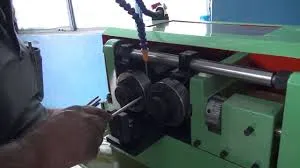
-
 Afrikaans
Afrikaans -
 Albanian
Albanian -
 Amharic
Amharic -
 Arabic
Arabic -
 Armenian
Armenian -
 Azerbaijani
Azerbaijani -
 Basque
Basque -
 Belarusian
Belarusian -
 Bengali
Bengali -
 Bosnian
Bosnian -
 Bulgarian
Bulgarian -
 Catalan
Catalan -
 Cebuano
Cebuano -
 Corsican
Corsican -
 Croatian
Croatian -
 Czech
Czech -
 Danish
Danish -
 Dutch
Dutch -
 English
English -
 Esperanto
Esperanto -
 Estonian
Estonian -
 Finnish
Finnish -
 French
French -
 Frisian
Frisian -
 Galician
Galician -
 Georgian
Georgian -
 German
German -
 Greek
Greek -
 Gujarati
Gujarati -
 Haitian Creole
Haitian Creole -
 hausa
hausa -
 hawaiian
hawaiian -
 Hebrew
Hebrew -
 Hindi
Hindi -
 Miao
Miao -
 Hungarian
Hungarian -
 Icelandic
Icelandic -
 igbo
igbo -
 Indonesian
Indonesian -
 irish
irish -
 Italian
Italian -
 Japanese
Japanese -
 Javanese
Javanese -
 Kannada
Kannada -
 kazakh
kazakh -
 Khmer
Khmer -
 Rwandese
Rwandese -
 Korean
Korean -
 Kurdish
Kurdish -
 Kyrgyz
Kyrgyz -
 Lao
Lao -
 Latin
Latin -
 Latvian
Latvian -
 Lithuanian
Lithuanian -
 Luxembourgish
Luxembourgish -
 Macedonian
Macedonian -
 Malgashi
Malgashi -
 Malay
Malay -
 Malayalam
Malayalam -
 Maltese
Maltese -
 Maori
Maori -
 Marathi
Marathi -
 Mongolian
Mongolian -
 Myanmar
Myanmar -
 Nepali
Nepali -
 Norwegian
Norwegian -
 Norwegian
Norwegian -
 Occitan
Occitan -
 Pashto
Pashto -
 Persian
Persian -
 Polish
Polish -
 Portuguese
Portuguese -
 Punjabi
Punjabi -
 Romanian
Romanian -
 Russian
Russian -
 Samoan
Samoan -
 Scottish Gaelic
Scottish Gaelic -
 Serbian
Serbian -
 Sesotho
Sesotho -
 Shona
Shona -
 Sindhi
Sindhi -
 Sinhala
Sinhala -
 Slovak
Slovak -
 Slovenian
Slovenian -
 Somali
Somali -
 Spanish
Spanish -
 Sundanese
Sundanese -
 Swahili
Swahili -
 Swedish
Swedish -
 Tagalog
Tagalog -
 Tajik
Tajik -
 Tamil
Tamil -
 Tatar
Tatar -
 Telugu
Telugu -
 Thai
Thai -
 Turkish
Turkish -
 Turkmen
Turkmen -
 Ukrainian
Ukrainian -
 Urdu
Urdu -
 Uighur
Uighur -
 Uzbek
Uzbek -
 Vietnamese
Vietnamese -
 Welsh
Welsh -
 Bantu
Bantu -
 Yiddish
Yiddish -
 Yoruba
Yoruba -
 Zulu
Zulu
Setup Guide for Thread Rolling Machines in China Manufacturing Industry
Setting Up a China Thread Rolling Machine A Comprehensive Guide
Thread rolling machines play a crucial role in modern manufacturing, particularly in industries that require precise and durable threading on metal parts. China, being a global leader in manufacturing, has developed advanced thread rolling machines that cater to a wide array of industrial needs. Setting up these machines correctly is vital for achieving optimal performance and prolonging their lifespan. This article outlines the key steps involved in setting up a China thread rolling machine.
Understanding the Machine Components
Before starting the setup process, it’s essential to familiarize yourself with the thread rolling machine components. Typically, these machines consist of a frame, rolls, a drive mechanism, and a workpiece holder. Understanding how these components interact will help in troubleshooting and maintenance down the road.
Safety First
Safety should be the primary concern when setting up heavy machinery. Always wear appropriate personal protective equipment (PPE), including gloves, safety goggles, and steel-toed boots. Ensure that the work area is clean and free of hazards. It’s advisable to have a safety brief with all personnel involved in the setup process to discuss potential risks and emergency procedures.
Preparing the Machine
1. Leveling the Machine The first step in setup is to ensure that the machine is placed on a stable and level surface. Use a leveling tool to check this and adjust the leveling feet accordingly. A level machine is crucial for consistent thread quality.
2. Electrical Connection Connect the machine to a suitable power source, ensuring that the voltage and amperage meet the manufacturer’s specifications. It’s important that all electrical connections are secure, and a qualified electrician should perform this task if needed.
3. Hydraulic System Setup If the machine is hydraulic, check the hydraulic fluid level and ensure that there are no leaks in the system. Connect the hydraulic lines as per the manufacturer’s guidelines, and bleed the system to remove any air pockets.
china thread rolling machine setup

Installing the Thread Rolling Rolls
The thread rolling rolls are critical for forming threads on the workpiece. Carefully select the appropriate rolling dies based on the specifications of the threads required. Install the rolls into their designated slots, ensuring they are properly aligned. An incorrect installation can lead to poor thread quality or even damage the machine.
Adjusting Settings
With the rolls in place, it’s time to adjust the machine settings. This includes setting the speed and feed rates based on the type of material being worked on. Consult the machine’s manual for specific guidelines on these parameters. It’s advisable to perform a few test runs to fine-tune the settings for optimal results.
Testing the Setup
Before starting full production, conduct a test run with scrap material. Monitor the threading process closely to check for any irregularities. This test will help identify any adjustments needed for the machine settings, ensuring quality and precision in the final product.
Training and Operational Procedures
Once the machine is set up and tested, provide training for all operators. They should be well-versed in the operational procedures, safety protocols, and maintenance requirements to ensure the machine runs efficiently.
Conclusion
Setting up a China thread rolling machine requires careful planning, a systematic approach, and attention to detail. By following these steps, manufacturers can ensure their machines operate at peak performance, delivering high-quality threaded products essential for various applications in the industry. Proper setup and maintenance will ultimately lead to increased productivity and reduced downtime, contributing to overall operational success.
